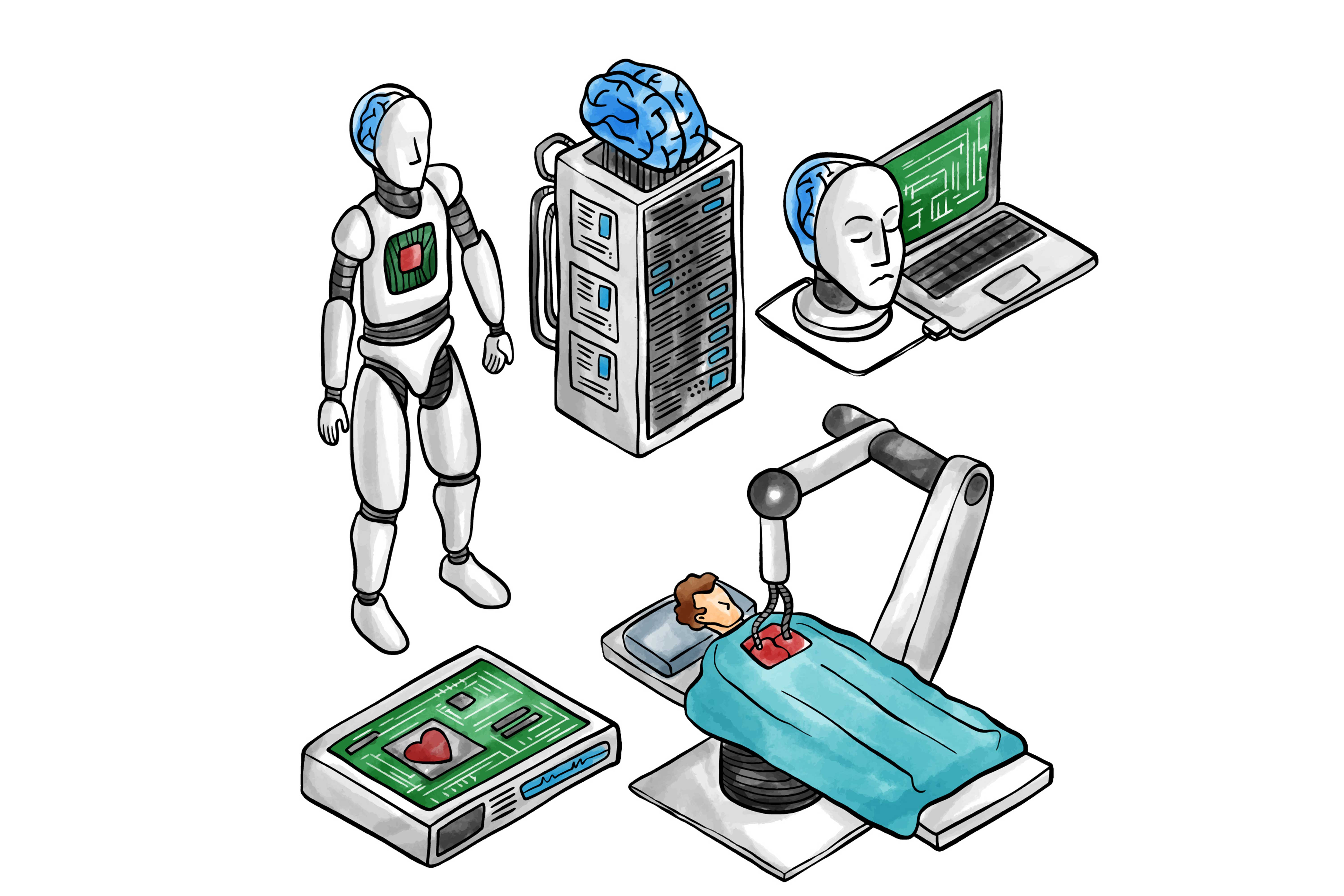Everything You Need To Know About Epilepsy
"Epilepsy is a neurological disease in which numerous electrical discharges occur in the brain and is a progressive disorder with recurrent seizures."

Epilepsy From Past to Present
What is epilepsy?
Prevalence
Epilepsy in Turkey
Types of epilepsies and symptoms
Diagnostic Methods
Drug Therapy
Other treatments
Causes and risk factors
Living with epilepsy
Genetics
Summary
Aaberg, K.M.,et al. 2017. Seizures, Syndromes, and Etiologies in Childhood Epilepsy: The International League Against Epilepsy 1981, 1989, and 2017 Classifications Used in a Population‐based Cohort. (2017).
https://pubmed.ncbi.nlm.nih.gov/28949013/
Anugwom, G., et al. 2021. Temporal Lobe Epilepsy Misdiagnosed as Schizophrenia: A Case Report.(2021). https://www.researchgate.net/publication/354872773_Temporal_Lobe_Epilepsy_Misdiagnosed_as_Schizophrenia_A_Case_Report#fullTextFileContent
Asadi‐Pooya, A.A. & Farazdaghi, M. 2022. Definition of Drug‐resistant Epilepsy: A Reappraisal Based on Epilepsy Types. (2022). https://pubmed.ncbi.nlm.nih.gov/35130355/
Banerjee, P.N., et al. 2009. The Descriptive Epidemiology of Epilepsy—A Review. (2009). https://pubmed.ncbi.nlm.nih.gov/19369037/
Canpolat, M., et al. Prevalence and Risk Factors of Epilepsy Among School Children in Kayseri City Center, an Urban Area in Central Anatolia, Turkey. (2014). https://pubmed.ncbi.nlm.nih.gov/24939524/
Caraballo, R.H., et al. Late‐onset, “Gastaut Type”, Childhood Occipital Epilepsy: An Unusual Evolution. (2005). https://pubmed.ncbi.nlm.nih.gov/16338677/
Crumrine, P.K. Antiepileptic Drug Selection in Pediatric Epilepsy. (2002). https://pubmed.ncbi.nlm.nih.gov/11952032/
Çalışır, N., et al. Prevalence of Epilepsy in Bursa City Center, an Urban Area of Turkey. (2006). https://pubmed.ncbi.nlm.nih.gov/17054692/
Dakaj, N., et al. 2016. Accuracy of Conventional Diagnostic Methods for Identifying Structural Changes in Patients With Focal Epilepsy. (2016). https://pubmed.ncbi.nlm.nih.gov/28077892/
Dayapoğlu, N. & Tan, M. Clinical Nurses' Knowledge and Attitudes Toward Patients With Epilepsy. (2016). https://pubmed.ncbi.nlm.nih.gov/27372960/
Fisher, R.S., et . ILAE Official Report: A practical clinical definition of epilepsy. (2014). https://pubmed.ncbi.nlm.nih.gov/24730690/.
Goldman, A.M., et al. 2014 Epilepsy Benchmarks Area IV: Limit or Prevent Adverse Consequence of Seizures and Their Treatment Across the Lifespan. (2016). https://pubmed.ncbi.nlm.nih.gov/27330453/
Gupta, S., et al. A Prospective Observational Study on Changing Trends of Antiepileptics Prescription Amongst Physicians in India. (2023). https://esmed.org/MRA/mra/article/view/3654.
Helbig, I. & Lowenstein, D.H. Genetics of the Epilepsies. (2013). https://pubmed.ncbi.nlm.nih.gov/23429546/
Kaculini, C.M., et al. The History of Epilepsy: From Ancient Mystery to Modern Misconception. (2021). https://pubmed.ncbi.nlm.nih.gov/33880289/
Karaağaç, N., et al. Prevalence of Epilepsy in Silivri, a Rural Area of Turkey. (1999). https://pubmed.ncbi.nlm.nih.gov/10386534/
Ke, B., et al. Sex Hormones and Risk of Epilepsy: A Bidirectional Mendelian Randomization Study. (2023). https://pubmed.ncbi.nlm.nih.gov/37113268/
Kind, C., et al. Prevalence, Risk Factors, and Neurobehavioral Comorbidities of Epilepsy in Kenyan Children. (2017). https://pubmed.ncbi.nlm.nih.gov/29588970/
Li, W., et al. Is There an Epilepsy Belt of High Prevalence Rate in China? (2022). https://pubmed.ncbi.nlm.nih.gov/36341118/
Martin, K., et al. Ketogenic Diet and Other Dietary Treatments for Epilepsy. (2016). https://pubmed.ncbi.nlm.nih.gov/26859528/
Mcdermott, S., et al. Maternal Genitourinary Infection Appears to Synergistically Increase the Risk of Epilepsy in Children of Women With Epilepsy. (2009). https://pubmed.ncbi.nlm.nih.gov/20051695/
Oja, K.T., et al. Untargeted Metabolomics Profiling in Pediatric Patients and Adult Populations Indicates a Connection Between Lipid Imbalance and Epilepsy. (2023).
Piccioli, M., et al. Ictal Headache and Visual Sensitivity. (2009). https://pubmed.ncbi.nlm.nih.gov/18823360/
Ream, M.A. & Patel, A.D. Obtaining Genetic Testing in Pediatric Epilepsy. (2015). https://pubmed.ncbi.nlm.nih.gov/26345167/
Sheidley, B.R., et al. Genetic Testing for the Epilepsies: A Systematic Review. (2021). https://pubmed.ncbi.nlm.nih.gov/34893972/
Trujillo, S., et al. Knowledge and Beliefs About Epilepsy Genetics Among Hispanic and non‐Hispanic</Scp> Patients. (2023). https://pubmed.ncbi.nlm.nih.gov/37353999/
Weerd, A.D., et al. Subjective Sleep Disturbance in Patients With Partial Epilepsy: A Questionnaire‐based Study on Prevalence and Impact on Quality of Life. (2004). https://pubmed.ncbi.nlm.nih.gov/15509241/
Yang, C., et al. Cadherins and the Pathogenesis of Epilepsy. (2022). https://pubmed.ncbi.nlm.nih.gov/35393670/
Zaccara, G., et al. Tolerability of New Antiepileptic Drugs: A Network Meta-Analysis. (2017). https://pubmed.ncbi.nlm.nih.gov/28378057/
Zeng, Y., et al. Roles of Gut Microbiome in Epilepsy Risk: A Mendelian Randomization Study. (2023). https://pubmed.ncbi.nlm.nih.gov/36922970/













































